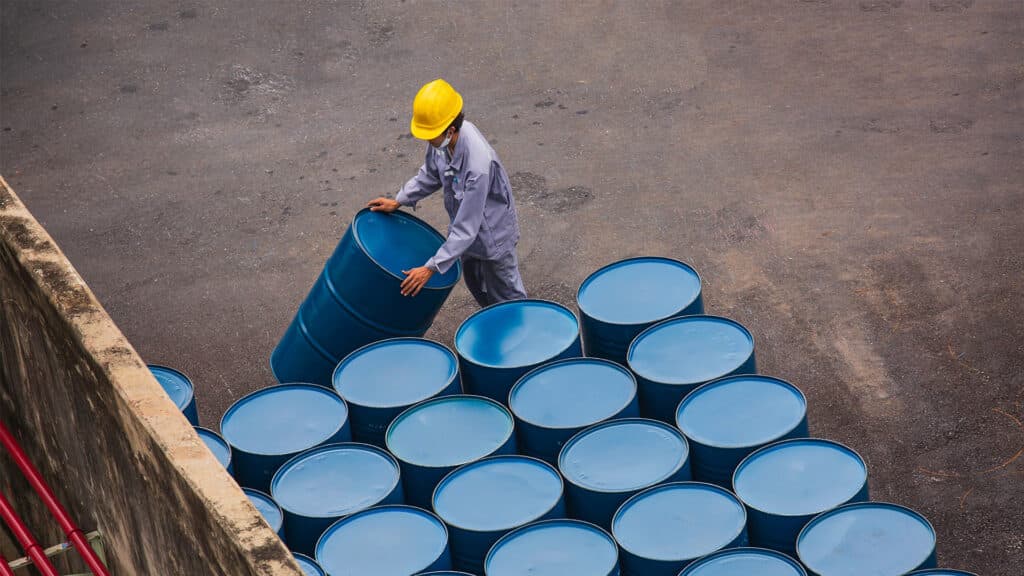Oil production up in Kazakhstan, but prices threaten revenue

Kazakhstan’s oil production is expected to grow in 2025, but lower hydrocarbon prices could reduce export revenues, according to Halyk Finance.
«By mid-2025, the Future Growth Project (FGP) at the Tengiz field is expected to be fully operational. As a result, oil production at Tengiz is projected to increase by 24.8% year-on-year (YoY), reaching 34.7 million tons compared to 27.8 million tons in 2024, which should positively impact export figures… However, the predicted decline in oil prices will offset these gains,» analysts from Halyk Finance stated.
According to Bloomberg’s consensus forecast, the average price of Brent crude oil in 2025 will be around $73 per barrel. This is due to slowing oil demand growth in China, a shift toward alternative energy sources and an expected increase in production from non-OPEC+ countries. Additionally, policies under U.S. President Donald Trump could lead to a rise in shale oil production, further pressuring global prices.
Meanwhile, as analysts at Halyk Finance noted, Kazakhstan once again failed to meet its OPEC+ commitments in January 2025 due to the test launch of a new plant at Tengiz, adding uncertainty to oil production and export expansion forecasts for the year.
At the same time, projections indicate a moderate rise in Kazakhstan’s imports in 2025, driven by stable domestic demand and high government spending on infrastructure and investment projects. However, exchange rate volatility and rising inflation, both domestically and in key trade partners like Russia, could impact these forecasts. Overall, experts expect a moderate current account deficit of 1.3% of GDP in 2025.
Kazakhstan’s foreign trade balance recorded a surplus of $20.1 billion in 2024, a $3.1 billion increase YoY, according to the Bureau of National Statistics (BNS). This growth was driven by higher exports and a slight decline in imports, particularly during the first six months of the year.
The drop in imports was primarily due to reduced shipments of machinery and equipment, a result of lower investment in the mining industry and trade sectors, which traditionally see high levels of investment-related imports. Analysts warn that this trend could hinder sustainable, high-quality economic growth.
Another contributing factor was a decline in re-export operations with Russia. On the other hand, export growth was supported by strong oil prices and increased shipments of metals and chemicals. However, Kazakhstan’s exports remained largely reliant on raw materials. Analysts suggest that government support should prioritize expanding non-resource exports, particularly in the medium- and high-tech product sectors.
The positive trade balance in 2024 reflected an increase in exports alongside a simultaneous drop in imports. The total value of goods exports rose 3.1% YoY to $81.6 billion, up from $79.1 billion in 2023. However, export trends fluctuated throughout the year. Following a 1.7% decline in the first quarter (Q1), exports rebounded with a 7.6% growth YoY in Q2 and a 6.8% growth in Q3 before slipping 0.1% in Q4. Overall, exports showed a modest upward trend.
Meanwhile, goods imports fell 1% to $59.8 billion in 2024. Exports were buoyed by high oil prices, which averaged $80.70 per barrel for the year despite a decline in Q4. As a result, revenue from oil exports rose 1.2% to $42.7 billion. Metal exports saw a significant 13.3% increase, adding $1.3 billion, while food exports declined 5.7% or $300 million due to government-imposed restrictions.
In a recent call with OPEC representatives and major oil producers, Kazakhstan’s Energy Minister Almassadam Satkaliyev explained the reasons behind the country’s sharp increase in oil production in January.
According to Satkaliyev, the rise in output was due to the launch of the Third-Generation Plant (3GP) at the Tengiz oil field as part of the Future Growth Project (FGP). Initially, production increases at Tengiz were scheduled to begin in June or July 2025. However, he assured OPEC that the January surge was a temporary, one-time event caused by testing after technical maintenance and the commissioning of a new processing unit at the field.
OPEC previously reported that Kazakhstan’s average daily oil production (excluding gas condensate) rose 5% in January 2025 compared to December 2024, reaching 1.538 million barrels per day, up from 1.465 million. As a result, Kazakhstan once again exceeded its OPEC+ quota, which was set at 1.468 million barrels per day for Q1 of 2025. Due to earlier overproduction, Kazakhstan had already agreed to cut output by 65,000 barrels per day in January. The country must compensate for exceeding its production limits through June 2026.
According to the Ministry of Energy, Tengizchevroil (TCO) is expected to produce 34.7 million tons of crude oil (about 760,000 barrels per day) at Tengiz in 2025. This would mark a 24.8% increase from the 27.8 million tons produced in 2024. TCO plans to gradually ramp up production in the coming months, targeting an additional 12 million tons per year, bringing total annual output to 40 million tons.
Kazakhstan expects total oil and gas condensate production to reach 96.2 million tons in 2025, up from 87.7 million tons in 2024. Oil exports amounted to 68 million tons in 2024.
TCO is a joint venture controlled by U.S.-based Chevron (50%), ExxonMobil (25%), KazMunayGas (20%) and the Russian oil company Lukoil (5%). TCO exports 95% of its oil via the Caspian Pipeline Consortium (CPC) system, with the remaining 5% transported through the Aktau port and the Baku-Tbilisi-Ceyhan pipeline. CPC anticipates an increase in Kazakhstani oil shipments from the second half of 2025, driven by rising production at Tengiz.

